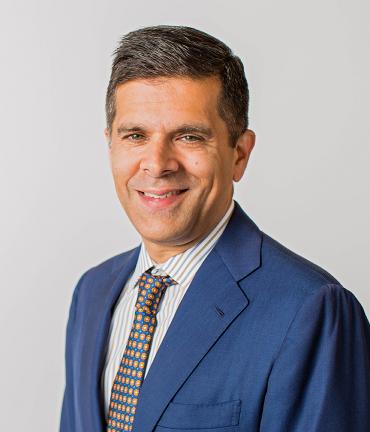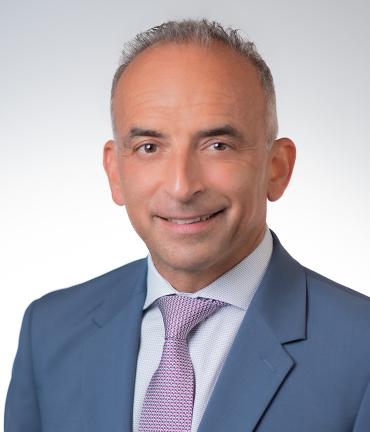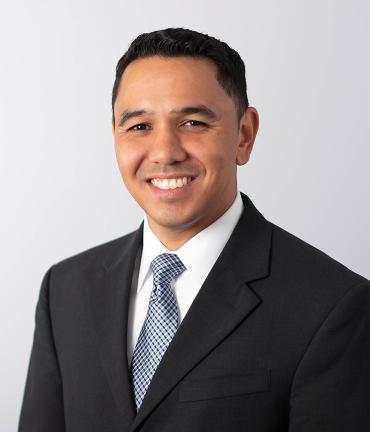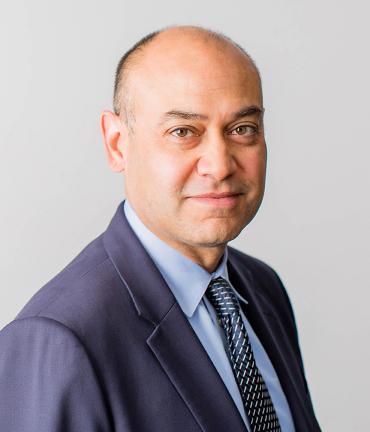
Craniopharyngioma
Craniopharyngioma is a type of benign (noncancerous) brain tumor that arises near the pituitary, a pea-sized gland at the base of the brain that secretes a variety of hormones.
Craniopharyngiomas can be divided into two types: adamantinomatous craniopharyngioma which mainly occurs in children, and papillary craniopharyngioma which mainly occurs in adults. Both are benign tumors. However, as they grow they may put pressure on nearby brain regions, like the pituitary, hypothalamus, optic nerves, and the fluid-filled ventricles of the brain. This may have corresponding effects on a variety of functions like hormone regulation and vision.
Because craniopharyngioma arises in the brain near the pituitary, tumor growth can affect pituitary function. Depending on which hormones are affected, the following symptoms may occur:
- Short stature or slow growth, in children
- Delayed puberty, in children
- Excessive thirst and/or urination
- Unusual sleepiness
- Weight gain
In addition, because the optic nerves (which connect the eyes to the brain) are located above the pituitary gland, craniopharyngioma may cause the following:
- Progressive loss of vision
Sometimes, very large craniopharyngioma can block normal flow of cerebrospinal fluid in the brain. This can cause a buildup of cerebrospinal fluid that increases pressure in the brain, a condition called hydrocephalus. Some common symptoms, resulting from increased pressure in the brain, may include the following:
- Headaches (typically in the morning)
- Nausea or vomiting (typically worse in the morning)
- Fatigue
Craniopharyngioma is relatively rare, accounting for 1.1% of all non-malignant brain tumors.1 In 2017, an estimated 620 new cases were diagnosed in the United States.1 Craniopharyngioma affects both adults and children.
The treatment of craniopharyngioma is complex because many factors affect whether the tumor can be removed or prevented from growing. In general, the initial approach is to perform surgery to remove as much of the tumor as possible. Depending on the size and location of the tumor, patients with craniopharyngioma may be a candidate for minimally invasive skull base surgery. This approach involves removing the tumor endoscopically, using special tools and scopes that pass through small openings–in this case, the nasal passages. Because many craniopharyngioma can be removed through the patient’s nose, this type of procedure does not require drilling into the skull, or making facial or scalp incisions. For very large tumors, larger operations (i.e. craniotomy) may be necessary.
Surgery by itself is sufficient for successful long-term treatment in only about a third of patients with craniopharyngioma. The main problem that prevents complete removal is that craniopharyngiomas can be tightly attached to important structures such as the optic nerves, pituitary gland, and hypothalamus. Damaging these vital structures can lead to severe and undesirable functional deficits. If a complete resection (or, gross total resection) cannot be accomplished, then a partial resection (subtotal resection) is done, leaving a small amount of craniopharyngioma behind. If there is clearly some tumor remaining after surgery, or if there is doubt about whether any part of the tumor is left, then radiation is recommended to prevent recurrence of the tumor. The type of radiation used depends upon the location of the residual tumor:
If there is a larger amount of tumor remaining after surgery, or if vital structures are close by, then 3D conformal radiation therapy or intensity modulated radiation therapy may be used. These methods use many radiation beams at different angles that individually deliver a low dose of radiation, but together, intersect to concentrate a higher, effective dose of radiation at the tumor site. This minimizes radiation exposure to healthy brain tissue and is a safe, effective technique.
If there is a small, well-defined residual tumor remaining that is a safe distance from the optic nerves or hypothalamus, then Gamma Knife radiosurgery is an option. Gamma Knife radiosurgery also uses many radiation beams that converge on single spot to deliver the highest cumulative dose of radiation to the tumor site.
In general, although radiation can be an effective treatment, it can also cause long-term side effects, especially in children. Radiation could affect normal function of the pituitary, as well as cognitive function. So for young children who have had a good surgical resection of the tumor, an alternative option is continued observation. If there is clear evidence that the craniopharyngioma has returned, then treatment may proceed with radiation.
There are also unusual craniopharyngiomas that are mostly cystic (they contain a large fluid-filled space) and these tumors can be treated with a specific chemotherapy agent called interferon-alpha, or in some cases, agents delivered directly into the cyst.
Some craniopharyngiomas, particularly those that are large or arise in very young children, are particularly challenging to treat. Even so, long-term outcomes are positive for most patients. At ten years after diagnosis, overall survival rates for adult patients with craniopharyngioma are 85-90%.2
Outcomes are best if the tumor is removed completely or treated effectively with radiation. Depending on how severe the symptoms are at the time of diagnosis, patients can make a complete recovery. However, because craniopharyngiomas can impact important brain structures (like the pituitary, hypothalamus, or optic nerves), the tumor could cause permanent problems such as loss of vision or hormone imbalance. In general, most children with craniopharyngiomas will require long-term monitoring of endocrine function, in addition to hormone treatment if the pituitary is not functioning properly.
Most patients will require long-term follow up and evaluation by a team of physicians including neurosurgery, neuro-oncology, endocrinology, and ophthalmology.
- Ostrom, Q.T., et al., CBTRUS Statistical Report: Primary brain and other central nervous system tumors diagnosed in the United States in 2010-2014. Neuro Oncol, 2017. 19(suppl_5): p. v1-v88.
- Zoicas, F. and C. Schofl, Craniopharyngioma in adults. Front Endocrinol (Lausanne), 2012. 3: p. 46.
Surgical Specialists
This content was reviewed by UCSF neurosurgeons Nalin Gupta MD, PhD and Manish Aghi MD, PhD.





